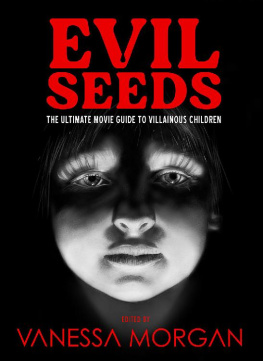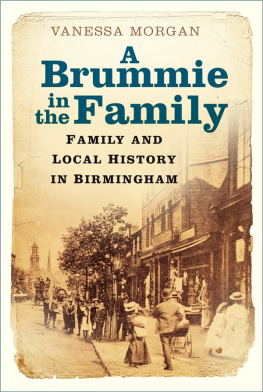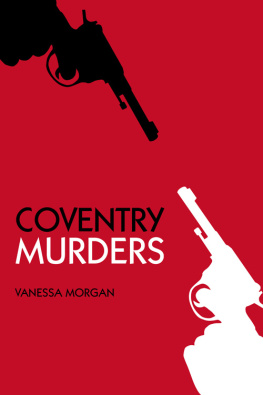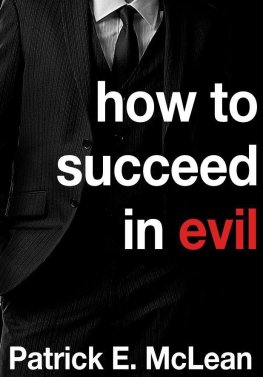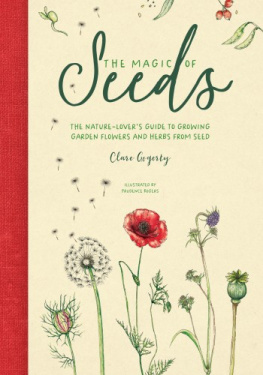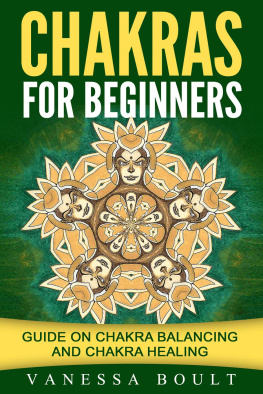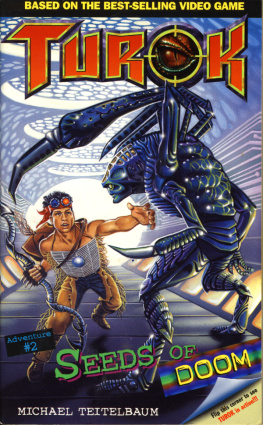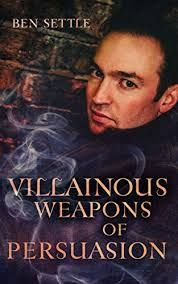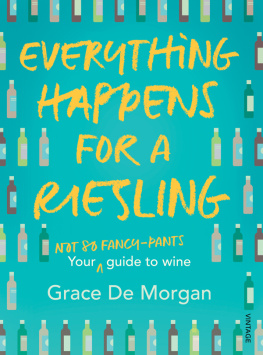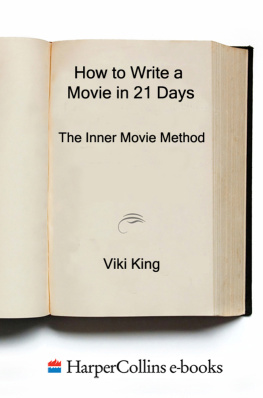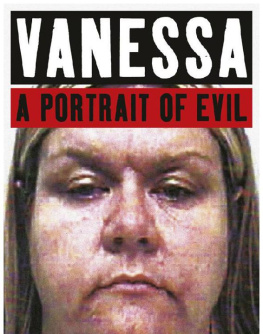Vanessa Morgan - Evil Seeds: The Ultimate Movie Guide to Villainous Children
Here you can read online Vanessa Morgan - Evil Seeds: The Ultimate Movie Guide to Villainous Children full text of the book (entire story) in english for free. Download pdf and epub, get meaning, cover and reviews about this ebook. year: 2021, genre: Children. Description of the work, (preface) as well as reviews are available. Best literature library LitArk.com created for fans of good reading and offers a wide selection of genres:
Romance novel
Science fiction
Adventure
Detective
Science
History
Home and family
Prose
Art
Politics
Computer
Non-fiction
Religion
Business
Children
Humor
Choose a favorite category and find really read worthwhile books. Enjoy immersion in the world of imagination, feel the emotions of the characters or learn something new for yourself, make an fascinating discovery.
- Book:Evil Seeds: The Ultimate Movie Guide to Villainous Children
- Author:
- Genre:
- Year:2021
- Rating:3 / 5
- Favourites:Add to favourites
- Your mark:
- 60
- 1
- 2
- 3
- 4
- 5
Evil Seeds: The Ultimate Movie Guide to Villainous Children: summary, description and annotation
We offer to read an annotation, description, summary or preface (depends on what the author of the book "Evil Seeds: The Ultimate Movie Guide to Villainous Children" wrote himself). If you haven't found the necessary information about the book — write in the comments, we will try to find it.
Evil Seeds: The Ultimate Movie Guide to Villainous Children — read online for free the complete book (whole text) full work
Below is the text of the book, divided by pages. System saving the place of the last page read, allows you to conveniently read the book "Evil Seeds: The Ultimate Movie Guide to Villainous Children" online for free, without having to search again every time where you left off. Put a bookmark, and you can go to the page where you finished reading at any time.
Font size:
Interval:
Bookmark:
EVIL SEEDS:
THE ULTIMATE MOVIE GUIDE TO VILLAINOUS CHILDREN
Edited by Vanessa Morgan
Copyright 2021
Cover design by Gilles Vranckx
Layout by Chris Vermeylen
Copyediting by Vanessa Morgan, Aaron Christensen, Anne Billson, Gert Verbeeck
No part of this publication may be reproduced, stored in or introduced into a retrieval system, or transmitted, in any form, or by any means (electronic, mechanical, photocopying, recording, or otherwise), without the prior written permission of the copyright owner of the book.
Copyright of the film stills and promotional artwork is the property of the production and distribution companies concerned. These illustrations are reproduced here in the spirit of publicity, and while every effort has been made to trace the copyright owners, the author apologizes for any omissions and will undertake to make any appropriate changes in any future editions of this book if necessary.
The photographs acquired and selected for this book aim to offer the best possible quality. However, in some cases (due to the obscure nature of certain films), only screenshots from online public domain sources were available. Nonetheless, great care went into picking the best representable images for every film included in this book.
INTRODUCTION
Something's wrong with the children. They murder their classmates, torture their parents, turn into werewolves, speak in tongues, drink human blood, or practice black magic.
The "evil child" is an intriguing niche in both literature and film, often portraying their perceived innocence in sharp contrast to their violent actions. What most people consider to be "cute" their underdeveloped bodies with out-of-proportion heads can quickly worsen one's pedophobia (the fear of children) when combined with a demonic or otherworldly demeanor. And when adults are menaced by those over whom we thought to have absolute control those who are smaller, weaker, and intellectually less developed then is there anything left besides feeling utterly powerless? It's a frightening idea, being exposed to a juvenile threat we can't do anything about. Our society, by nature, gives children the benefit of the doubt. How can something so innocent be capable of such cruel acts? When confronted with their progeny as a source of evil, adults in this type of story may even question their own assumptions. And if they can't trust their own conclusions, how can they expect outsiders to believe them? They're all alone in their defense, especially in a society where it's against all norms to hurt an infant. Or, as the title of Narciso Ibez Serrador's 1976 cult film states, Who Can Kill a Child?
Quite a few movies, predominantly but not exclusively within the horror genre, have turned this premise into chilling entertainment. It's a gimmick, for sure one that is mainly used for recreational purposes. But beneath the surface, there's often a lot more at play. And the genesis of their ilk may root deeper than you think.
As with other film genres, these tropes often mirror the culture in which they are produced. In the Philippines, for example, the evil baby Tiyanak is part of the cultural heritage. As the country grows its religious belief systems, the Tiyanak's characteristics evolve accordingly. In India, horror movies about evil children often involve the fear of black magic, whereas Ireland loves tackling fairytales about elves and changelings.
But the evil-child movie also reflects the temperature of times, following the societal anxieties of its era (discounting the meaningless copycats that just want to cash in on the success of their predecessors). In some instances, this context is coincidental, arising from subconscious worries of the authors who rendered it. But more often than not, there is an intent to reflect life's current preoccupations.
It was the 1950s that saw the villainy of cinematic children achieve currency, by addressing dysfunctional aspects of childhood, or showing us disturbing acts we previously refused to see. This increased portrayal coincided with developments in psychoanalysis. Myriad theories pointed out that children weren't the examples of innocence we imagined them to be, but rather beings capable of perversity. According to Sigmund Freud, the infant was nothing but an uncontrolled bundle of impulses that ought to be submitted to the rules of society his fundamental beliefs have since been debated and considered obsolete, but nonetheless exerted their historical influence. This interest in childhood delinquency also concurred with a more distinct youth culture, resulting in such movies as Rebel Without a Cause (1955) and I Was a Teenage Werewolf (1957) .
A believed (but unproven) increase in juvenile crime also occurred during the aftermath of WWII. 1940s Hollywood cinema had grown accustomed to painting a playful and innocent picture of minors. If they were bad, they were merely naughty and performed harmless mischief. But in reality, the atrocities of war had children picking up arms in demolished cities. Before the start of WWII, many German youngsters between 10 to 14 years of age were being raised in conformity with Nazi ideologies, in order to prepare them for entering the Hitler Jugend program. These harsh dramas in the lives of WWII children in particular scenes that show them shooting and killing adult soldiers took a few more decades to find their way into motion pictures.
Rhoda Penmark from The Bad Seed (1956) is the first cinematic underage killer. Not that fictional children before The Bad Seed were entirely one-note in their representation of innocence. The evil child in literature, for example, started way before that with, among others, the magic-practicing Matilda of Matthew Lewis' 1796 gothic novel The Monk or the homicidal 12-year-old Josephine of Agatha Christie's 1949 detective novel Crooked House .
In real life, discussion of child-committed killings was still shunned, with little media attention. One of the first cases that received exposure through local newspapers at the time and retrospective documentation in years to come was that of Mary Flora Bell (born 1957). During spring and summer of 1968, she strangled two young boys to death in her hometown of Scotswood, Newcastle, North East England. The victims were Martin Brown (aged four) and Brian Howe (aged three), the latter also having been mutilated post-mortem. As such, the brutal nature of everyday society's crimes exceeded that of the era's on-screen counterparts.
In the 1960s, few evil-child movies were produced, and half of them were remakes or re-interpretations of The Bad Seed (1956), Village of the Damned (1960), and The Innocents (1961). Village of the Damned in particular (as well as John Wyndham's 1957 source novel, The Midwich Cuckoos ) touched upon an important post-war concern: the "unusual" high number of pregnancies. Although this was simply due to the increased number of marriages after the war, Wyndham found stark terror in the possibility of this new generation being "different."
On April 8, 1966, Time Magazine published a cover story that took the world by storm and subsequently changed the evil-child subgenre for decades to come. The article "Is God Dead?" in reference to Friedrich Nietzsche's "Gott ist tott" postulate tackled the idea that God was taking up less space in people's lives because science replaced the need for religion to explain the world. Seizing on this spiritual doubt, one religious horror movie of the 1970s would become a milestone. The Exorcist (1973) bore many celluloid possessions (with or without children), whereas The Omen (1976) an offspring of The Exorcist in itself produced a lasting cultural referent for underage Antichrists, many mere shadows of their successful predecessor. Their appeal was so huge that their cinematic influence was even felt in countries where Christianity and the Devil weren't part of the main religious belief system (such as Egypt, India, Turkey, Japan, or Hong Kong).
Next pageFont size:
Interval:
Bookmark:
Similar books «Evil Seeds: The Ultimate Movie Guide to Villainous Children»
Look at similar books to Evil Seeds: The Ultimate Movie Guide to Villainous Children. We have selected literature similar in name and meaning in the hope of providing readers with more options to find new, interesting, not yet read works.
Discussion, reviews of the book Evil Seeds: The Ultimate Movie Guide to Villainous Children and just readers' own opinions. Leave your comments, write what you think about the work, its meaning or the main characters. Specify what exactly you liked and what you didn't like, and why you think so.

